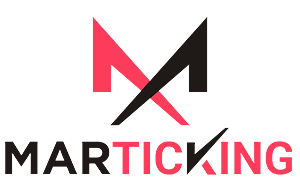Google: Spending Too Much Time on BackLinks May Be a Waste of Time
In the dynamic realm of Search Engine Optimization (SEO), the role of backlinks has been both pivotal and transformative. Traditionally regarded as the currency of online credibility and relevance, SEO backlinks have undergone a significant evolution in recent years. This blog seeks to delve deeper into the intricate interplay between backlinks and SEO, exploring not only their historical significance but also the nuanced strategies required to navigate the ever-changing algorithms of search engines like Google.
The Traditional Backlinks Paradigm:
Historically, backlinks have been viewed as a potent indicator of a website’s authority and relevance. The prevailing belief was that the more verify backlinks a site accumulated, the higher it would rank in search engine results pages (SERPs). Consequently, webmasters engaged in a relentless pursuit of backlinks through various means such as guest blogging, directory submissions, and reciprocal linking. Moreover, competitor backlink analysis emerged as a crucial tactic, providing valuable insights into the link-building strategies of industry peers and competitors.
The Evolution of Google’s Algorithm:
The landscape of SEO underwent a seismic shift with the evolution of Google’s ranking algorithm. Updates like Google Penguin marked a decisive turning point, targeting manipulative link-building practices and penalizing websites that engaged in spammy tactics. Furthermore, Google’s emphasis on user experience and relevance prompted a recalibration of ranking signals, with backlinks now being just one component of a multifaceted equation. Quality, relevance, and context have emerged as key determinants of a backlink’s value, challenging the notion that sheer quantity equates to SEO success.
The Pitfalls of Obsessive Backlinking:
In the pursuit of backlinks, many webmasters fell prey to the allure of quantity over quality. However, indiscriminate backlink accumulation without regard for relevance or authority can have detrimental consequences. Websites that engage in spammy link-building tactics risk incurring Google penalties, which can severely compromise their search visibility and credibility. Moreover, the proliferation of automated link-building tools and black hat SEO techniques has eroded the integrity of many backlinks, rendering them ineffective or even harmful to a website’s ranking.
Next-Generation Backlink Strategies:
In response to these challenges, forward-thinking SEO practitioners are embracing a more strategic and holistic approach to backlinking. Rather than viewing backlinks as isolated entities, they recognize them as integral components of a broader ecosystem that encompasses content quality, user experience, and website authority. This entails conducting comprehensive backlinking strategies is used to identify link-building opportunities and understand the competitive landscape. Furthermore, it involves creating compelling content assets that naturally attract inbound links from authoritative sources, fostering genuine relationships with industry influencers, and leveraging techniques such as guest blogging and broken link building to diversify a website’s backlink profile.
Conclusion:
As Marticking ventures into the competitive realm of digital marketing, it’s crucial to acknowledge the evolving dynamics of SEO and the central role that backlinks play within it. While backlinks have historically been prized as indicators of website authority and relevance, their significance is undergoing a transformation in response to Google’s algorithmic updates and shifting industry practices.
In crafting a comprehensive SEO strategy, Marticking must transcend the traditional paradigm of backlink accumulation and embrace a more nuanced and holistic approach. This entails prioritizing quality over quantity, focusing on relevance, authority, and user experience when acquiring backlinks. By conducting thorough competitor backlink analysis, Marticking can glean valuable insights into industry trends and identify strategic opportunities for link-building.
Moreover, Marticking should invest in creating compelling content that naturally attracts inbound links from authoritative sources. By fostering genuine relationships with industry influencers and thought leaders, Marticking can amplify its online visibility and authority in a manner that aligns with Google’s evolving ranking criteria.
Ultimately, Marticking’s success in the digital landscape will hinge not only on its ability to adapt to the changing dynamics of SEO but also on its capacity to cultivate a holistic and forward-thinking approach to backlink strategies. By leveraging backlinks as part of a broader ecosystem of content quality, user experience, and website authority, Marticking can establish itself as a formidable presence in the digital sphere, driving sustainable organic growth and staying ahead of the competition.


